Shuoran Jiang
GeRe: Towards Efficient Anti-Forgetting in Continual Learning of LLM via General Samples Replay
Aug 06, 2025Abstract:The continual learning capability of large language models (LLMs) is crucial for advancing artificial general intelligence. However, continual fine-tuning LLMs across various domains often suffers from catastrophic forgetting, characterized by: 1) significant forgetting of their general capabilities, and 2) sharp performance declines in previously learned tasks. To simultaneously address both issues in a simple yet stable manner, we propose General Sample Replay (GeRe), a framework that use usual pretraining texts for efficient anti-forgetting. Beyond revisiting the most prevalent replay-based practices under GeRe, we further leverage neural states to introduce a enhanced activation states constrained optimization method using threshold-based margin (TM) loss, which maintains activation state consistency during replay learning. We are the first to validate that a small, fixed set of pre-collected general replay samples is sufficient to resolve both concerns--retaining general capabilities while promoting overall performance across sequential tasks. Indeed, the former can inherently facilitate the latter. Through controlled experiments, we systematically compare TM with different replay strategies under the GeRe framework, including vanilla label fitting, logit imitation via KL divergence and feature imitation via L1/L2 losses. Results demonstrate that TM consistently improves performance and exhibits better robustness. Our work paves the way for efficient replay of LLMs for the future. Our code and data are available at https://github.com/Qznan/GeRe.
Reasoning Graph Enhanced Exemplars Retrieval for In-Context Learning
Sep 17, 2024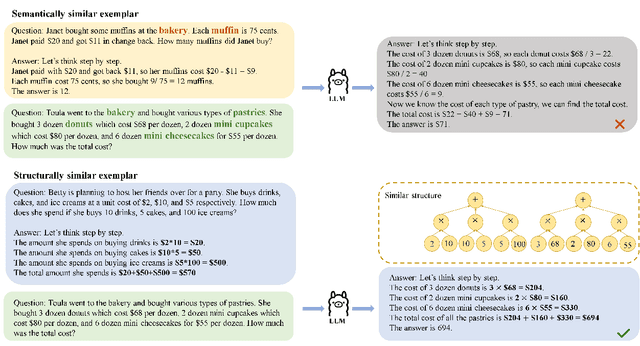
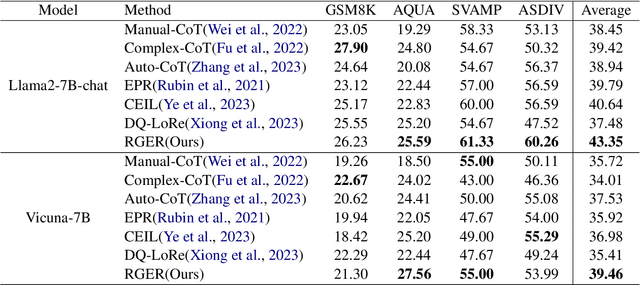
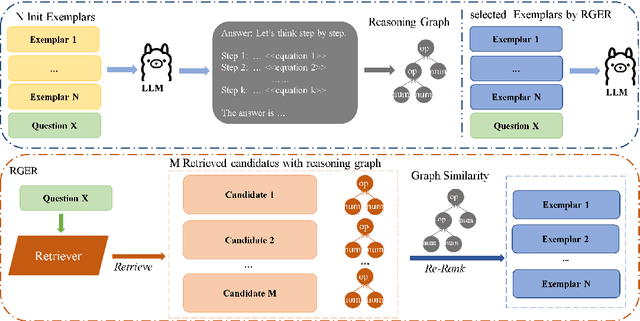

Abstract:Large language models(LLMs) have exhibited remarkable few-shot learning capabilities and unified the paradigm of NLP tasks through the in-context learning(ICL) technique. Despite the success of ICL, the quality of the exemplar demonstrations can significantly influence the LLM's performance. Existing exemplar selection methods mainly focus on the semantic similarity between queries and candidate exemplars. On the other hand, the logical connections between reasoning steps can be beneficial to depict the problem-solving process as well. In this paper, we proposes a novel method named Reasoning Graph-enhanced Exemplar Retrieval(RGER). RGER first quires LLM to generate an initial response, then expresses intermediate problem-solving steps to a graph structure. After that, it employs graph kernel to select exemplars with semantic and structural similarity. Extensive experiments demonstrate the structural relationship is helpful to the alignment of queries and candidate exemplars. The efficacy of RGER on math and logit reasoning tasks showcases its superiority over state-of-the-art retrieval-based approaches. Our code is released at https://github.com/Yukang-Lin/RGER.
ZO-AdaMU Optimizer: Adapting Perturbation by the Momentum and Uncertainty in Zeroth-order Optimization
Dec 23, 2023Abstract:Lowering the memory requirement in full-parameter training on large models has become a hot research area. MeZO fine-tunes the large language models (LLMs) by just forward passes in a zeroth-order SGD optimizer (ZO-SGD), demonstrating excellent performance with the same GPU memory usage as inference. However, the simulated perturbation stochastic approximation for gradient estimate in MeZO leads to severe oscillations and incurs a substantial time overhead. Moreover, without momentum regularization, MeZO shows severe over-fitting problems. Lastly, the perturbation-irrelevant momentum on ZO-SGD does not improve the convergence rate. This study proposes ZO-AdaMU to resolve the above problems by adapting the simulated perturbation with momentum in its stochastic approximation. Unlike existing adaptive momentum methods, we relocate momentum on simulated perturbation in stochastic gradient approximation. Our convergence analysis and experiments prove this is a better way to improve convergence stability and rate in ZO-SGD. Extensive experiments demonstrate that ZO-AdaMU yields better generalization for LLMs fine-tuning across various NLP tasks than MeZO and its momentum variants.
Confounder Balancing in Adversarial Domain Adaptation for Pre-Trained Large Models Fine-Tuning
Oct 24, 2023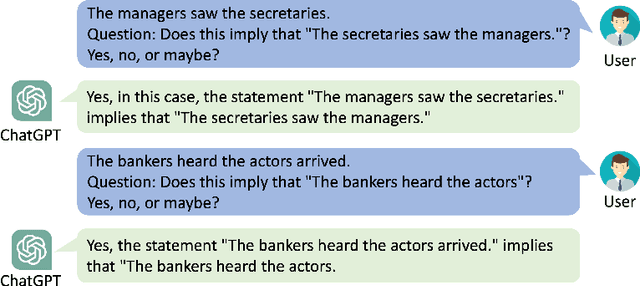
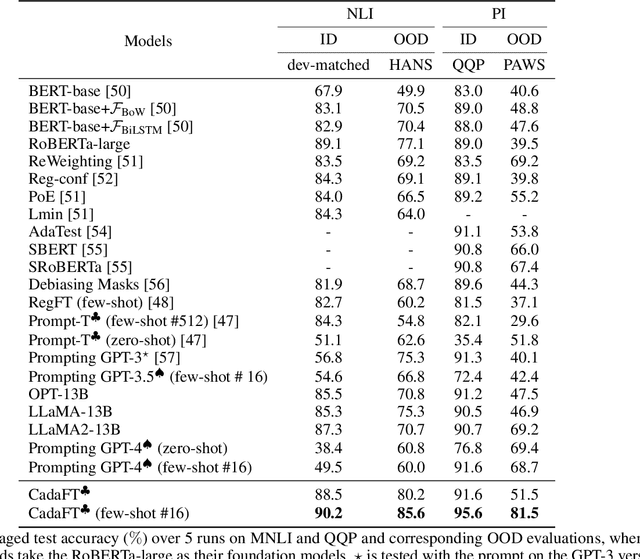
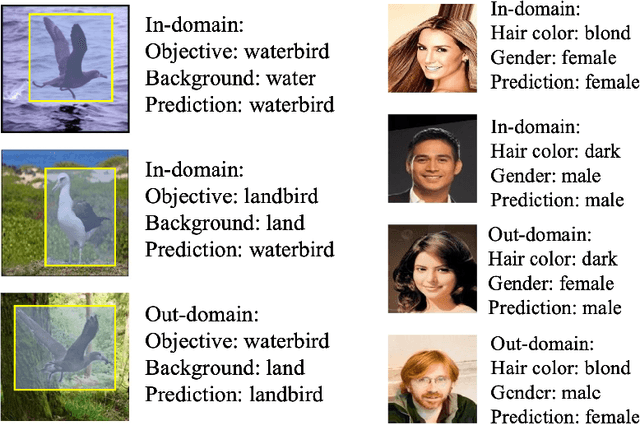
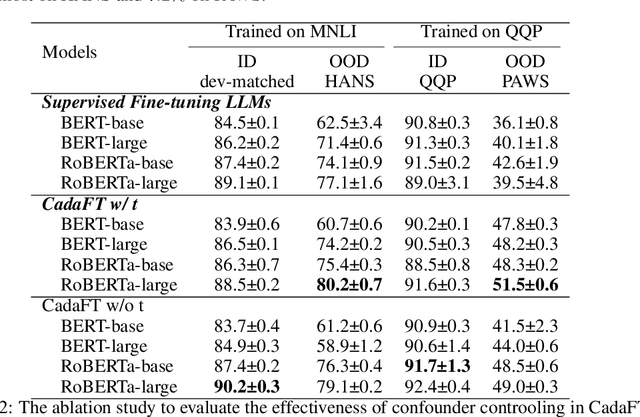
Abstract:The excellent generalization, contextual learning, and emergence abilities in the pre-trained large models (PLMs) handle specific tasks without direct training data, making them the better foundation models in the adversarial domain adaptation (ADA) methods to transfer knowledge learned from the source domain to target domains. However, existing ADA methods fail to account for the confounder properly, which is the root cause of the source data distribution that differs from the target domains. This study proposes an adversarial domain adaptation with confounder balancing for PLMs fine-tuning (ADA-CBF). The ADA-CBF includes a PLM as the foundation model for a feature extractor, a domain classifier and a confounder classifier, and they are jointly trained with an adversarial loss. This loss is designed to improve the domain-invariant representation learning by diluting the discrimination in the domain classifier. At the same time, the adversarial loss also balances the confounder distribution among source and unmeasured domains in training. Compared to existing ADA methods, ADA-CBF can correctly identify confounders in domain-invariant features, thereby eliminating the confounder biases in the extracted features from PLMs. The confounder classifier in ADA-CBF is designed as a plug-and-play and can be applied in the confounder measurable, unmeasurable, or partially measurable environments. Empirical results on natural language processing and computer vision downstream tasks show that ADA-CBF outperforms the newest GPT-4, LLaMA2, ViT and ADA methods.
Multi-hop Graph Convolutional Network with High-order Chebyshev Approximation for Text Reasoning
Jun 08, 2021



Abstract:Graph convolutional network (GCN) has become popular in various natural language processing (NLP) tasks with its superiority in long-term and non-consecutive word interactions. However, existing single-hop graph reasoning in GCN may miss some important non-consecutive dependencies. In this study, we define the spectral graph convolutional network with the high-order dynamic Chebyshev approximation (HDGCN), which augments the multi-hop graph reasoning by fusing messages aggregated from direct and long-term dependencies into one convolutional layer. To alleviate the over-smoothing in high-order Chebyshev approximation, a multi-vote-based cross-attention (MVCAttn) with linear computation complexity is also proposed. The empirical results on four transductive and inductive NLP tasks and the ablation study verify the efficacy of the proposed model. Our source code is available at https://github.com/MathIsAll/HDGCN-pytorch.
Neural Image Inpainting Guided with Descriptive Text
Apr 22, 2020



Abstract:Neural image inpainting has achieved promising performance in generating semantically plausible content. Most of the recent works mainly focus on inpainting images depending on vision information, while neglecting the semantic information implied in human languages. To acquire more semantically accurate inpainting images, this paper proposes a novel inpainting model named \textit{N}eural \textit{I}mage Inpainting \textit{G}uided with \textit{D}escriptive \textit{T}ext (NIGDT). First, a dual multi-modal attention mechanism is designed to extract the explicit semantic information about corrupted regions. The mechanism is trained to combine the descriptive text and two complementary images through reciprocal attention maps. Second, an image-text matching loss is designed to enforce the model output following the descriptive text. Its goal is to maximize the semantic similarity of the generated image and the text. Finally, experiments are conducted on two open datasets with captions. Experimental results show that the proposed NIGDT model outperforms all compared models on both quantitative and qualitative comparison. The results also demonstrate that the proposed model can generate images consistent with the guidance text, which provides a flexible way for user-guided inpainting. Our systems and code will be released soon.
 Add to Chrome
Add to Chrome Add to Firefox
Add to Firefox Add to Edge
Add to Edge